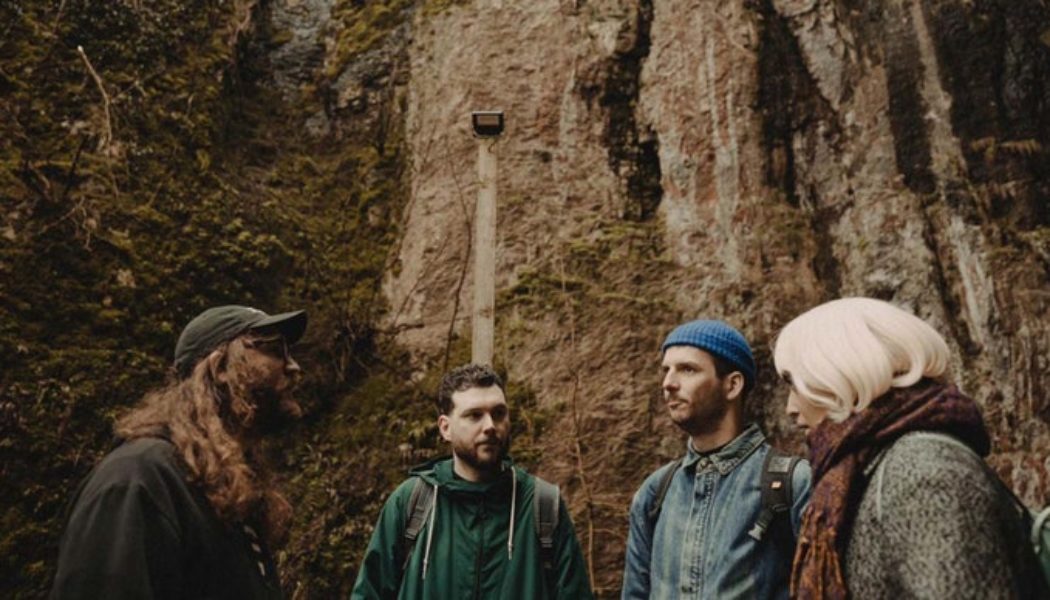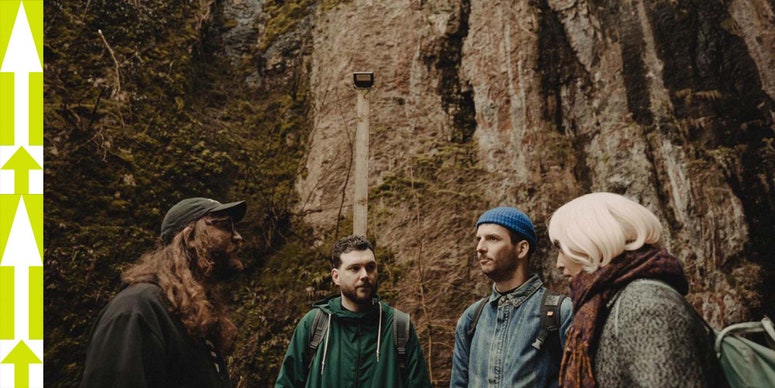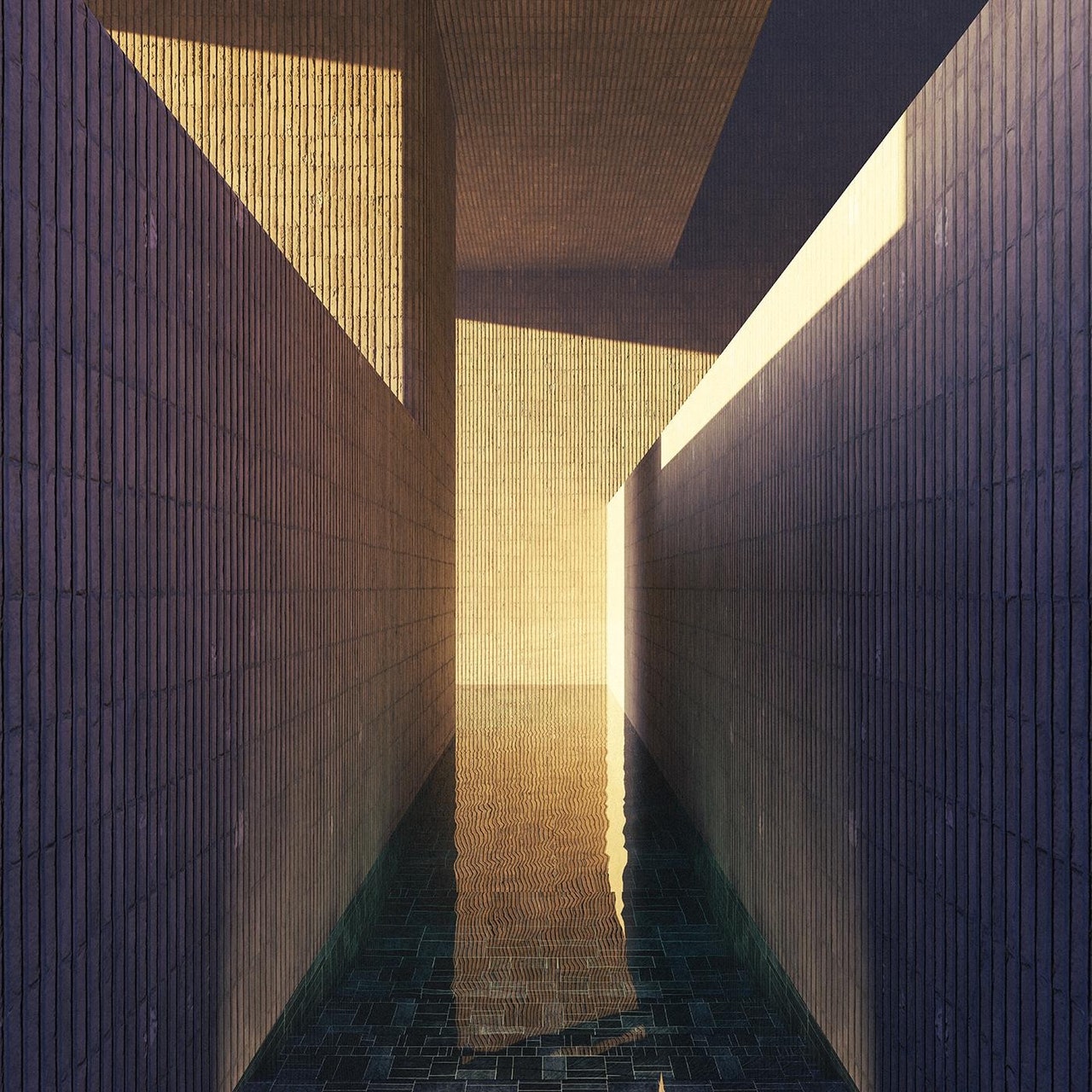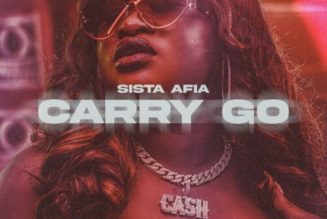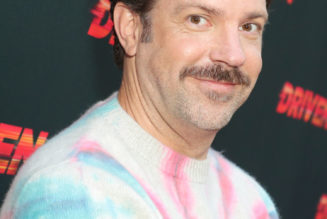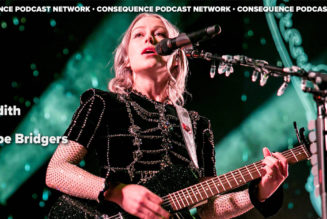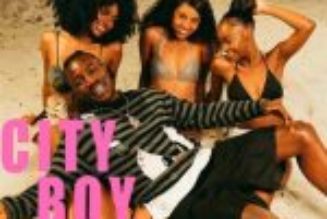Mandy, Indiana don’t make sense. Three Mancunians and a Parisian came together under a name inspired by Gary, Indiana—a Rust Belt symbol of post-industrial American decline—to make a sound that thrashes like an angry Hydra. Every time you think you have Mandy, Indiana cornered, they mutate again. You could call their music post-punk, electronic, or noise, but no single genre signifier satisfactorily conveys what they do. This is by design. Mandy, Indiana trade in chaos and severe contrasts. Their startling debut album, i’ve seen a way, is an unsettling catalog of societal ills that takes the form of a churning maelstrom.
Mandy, Indiana’s origins go back to 2016, when vocalist Valentine Caulfield and Mandy mastermind Scott Fair met at a Manchester club; the lineup is now rounded out by Simon Catling on synths and Alex Macdougall on drums. From the beginning—early singles like “Berlin,” or “Bottle Episode,” a standout from 2021’s … EP—their sound was a transfixing blend of violence and transcendence: dance rhythms knocked askew, corroded guitars and synths fed into the gears of malfunctioning machinery, Caulfield seething in her native French. i’ve seen a way partially aligns with the recent crop of adventurous guitar bands from England and Ireland, many of whom Mandy, Indiana have opened for, like Idles, Squid, and Gilla Band. (The latter’s Daniel Fox mixed half of i’ve seen a way, with Giant Swan’s Robin Stewart taking over the other.) Yet i’ve seen a way feels both more extreme and more accessible than some of their immediate progenitors.
Visual influences—Blade Runner 2049, the video game BioShock, the films of Leos Carax and Gaspar Noé—play an important role in the band’s music, and i’ve seen a way begins with a similarly filmic instrumental, “Love Theme (4K VHS),” a gorgeous piece of starlit arpeggiated synth. Like the best opening tracks, it feels like a curtain rising, but it isn’t long before the quartet sets up the first plot twist: The dreamlike song lures you into a nightmare world. At the very end of “Love Theme,” a beat gurgles to life, recalling the muffled reverberations you can hear while waiting to enter a club, and pivots into “Drag [Crashed],” a song that takes dancefloor catharsis and rewires it into an anxious hurtle headlong into crashing distortion and horror-movie drones.
Mandy, Indiana pull off similar tricks across the album, nodding to dance traditions but structuring rhythms too discomfiting for simple release. While the record’s underwater synths are often beguiling, its percussive backdrops are ferocious—between electronics and Macdougall’s drumming, songs like “Pinking Shears” clatter and heave as if trying to destroy everything in their path. “Injury Detail” flirts with a more direct groove, but it chokes and sputters. Within a single song, the band can seamlessly combine dissimilar moods and registers. “The Driving Rain (18)” is a neon-lit city cruise riding a robotic bassline, Caulfield rendered an Auto-Tuned alien above it, while “2 Stripe” uses haunting, distant screeches to bookend an emotive reprise of the “Love Theme” synths.
Across the album, Mandy, Indiana deploy terrifying, uneasy sounds—a palette they developed by utilizing field recordings and unusual approaches like tracking drums in a cave or capturing Caulfield’s screams in a Bristol shopping mall. “This is an album where heads butt and things clash,” Fair has said. “It’s supposed to be nasty, and to not work.”
And yet, it does. The various textures and shifts of i’ve seen a way are mesmerizing—down to the way that Caulfield presents herself more like another instrument than a typical frontwoman, leaning on her operatic training to produce vocals with an intensely textural heft. She sing-speaks, she murmurs, she hisses. Her approach often emphasizes the dichotomies of Mandy, Indiana’s music: “Peach Fuzz” is already a sideways, smeared take on dance music, and her punk yelps accentuate its visceral pulse.
You seldom need to know the actual content of Caulfield’s lyrics for them to resonate. Even if you don’t realize that “Drag [Crashed]” is about sexism and objectification, you can sense her fear and anger. Many of her lyrics deal with bleak themes—the climate crisis, or the West’s slide into fascism. Even a fairytale setting like “2 Stripe” looks toward revolution: The song’s final words translate to “Always remember/There are more of us than them.” In the end, on “Sensitivity Training,” the band gets there. While past songs like “Bottle Episode” used militaristic drums to depict oppression or war, the ragged march of “Sensitivity Training” ends the album with an uprising.
i’ve seen a way is a purposefully disorienting album: an idiosyncratic collision of familiar elements that blurs genres and defamiliarizes language. Yet it also settles into an unexpected balance. The music is abrasive, but in its most shocking moments, the band allows beauty to shine through the grime and static. In the album’s penultimate song, the whimsically named “(ノ>ω<)ノ :。・:*:・゚’★,。・:*:♪・゚’☆ (Crystal Aura Redux),” the rage and distortion fall away, allowing Caulfield’s voice and synths to peacefully float, as if ghosts were surveying the rubble left in their wake. i’ve seen a way might be the sound of someone sifting through ashes, but only in search of signs of a new world.
All products featured on Pitchfork are independently selected by our editors. However, when you buy something through our retail links, we may earn an affiliate commission.
